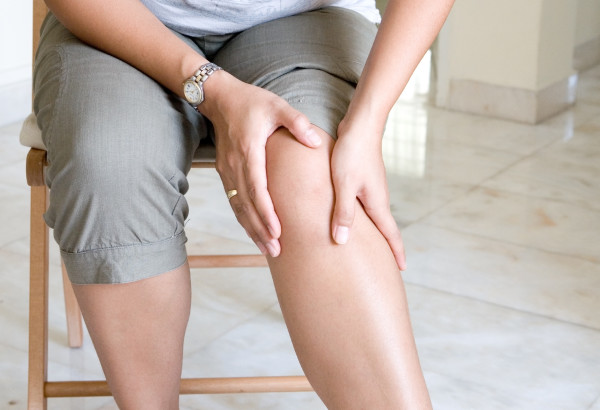
The A – Z of knees
The knee is the largest joint in the body and one of the most complex having 4 bones, more than 20 muscles each with a tendon, 4 major ligaments as well as many little ones, and at least 3 layers of cartilage. Here is an A-Z of everything you need to know about the knee
Arthroscopy
An operation to “clean” inside the knee joint. Only about a 3% success rate but sadly, often used so you feel like the doctors are “doing” something.
Bakers Cyst
Swelling at the back of the knee which can make walking uncomfortable and compromise the knee joint function.
Chilli
Researchers in Nashville say that rubbing a cream containing capsaicin is “significantly effective” for osteoarthritis of the knee as the heat distracts the nerves from the pain.
Diet
Visceral fat (the fat around the tummy) has been shown to be very toxic to all joints but the knee is particularly vulnerable. More weight also puts more load on weight bearing joints like the knee.
Extension
Getting the knee straight is of critical importance and is often the first movement to go. This is what causes the limp. A bent knee can then cause hip and back problems as the whole lower body is out of alignment. Many leg length discrepancies are misdiagnosed and are really lack of knee extension.
Feet
Your knee is the biggest shock absorber for every step you take, so if there is too much shock or twist from the feet, the knee is going to take the strain. Correct support at the feet can relieve the strain on the joint and reduce pain and prevent the situation getting worse.
Glucosamine
Best taken with chondroitin for maximum effect. This helps lubricate the joints, making movement less painful.
Hips
Pain from the hips is often referred to the knees. Make sure both are checked before starting treatment!
Ice
Numbs the pain and reduces swelling. Wrap ice pack or frozen peas, in a damp cloth to prevent ice burns, and apply for 10 minutes.
Joint Replacement
When the joint has become so damaged, it is replaced with a titanium joint and often refused if you are “too young” as they have a lifespan of 5 – 10 years depending on activity levels. Only consider as a last resort!
Knee Movement
Dutch research shows that exercise significantly improves movement and reduces pain in the knee. The 1st muscles to lose strength in any knee problem are the quadriceps so focus on these.
Limping
If not corrected, limping can cause problems in the back and hips as well, these problems can’t be resolved until the knee problem is fixed.
A German technology which strengthens and re-grows cartilage, ligaments and tendons in the joint. Over a 90% success rate for knees!
Nothing
Unfortunately waiting for it to “go away on its own” doesn’t always work, especially as you get older. It is always best to be proactive, the sooner you act the easier, quicker and more effective treatment is.
Modern computerised versions are slim and discreet enough to fit in everyday shoes and are a major tool to prevent knee problems.
Position
If your knee can’t get straight then this puts huge strain on the joint and stops the muscles working properly.
Q Angle Correction
The angle formed by your thighbone and shinbone through the knee cap when viewed from the front. If you are knock-kneed or bandy-legged this angle is wrong and putting pressure on the knee. The right shoes and arch support can reduce the risk of joint damage.
Referred Pain
Getting an accurate diagnosis is critically important! Pain in the knee can be referred from the hip or the feet. Without an accurate diagnosis treatment is a waste of time as you are not treating the true cause of the problem.
Supports
Are not all created equal! It is important to get the right one for your knee problem and the activity you want to do. Always make sure they are properly fitted, they should feel tight without cutting off the blood supply.
Tissue Engineering
Or stem cell regeneration. A new surgery technique which implants cartilage from elsewhere aiming to stimulate cartilage re-growth. Mixed results to date.
Ultrasound
Used by physiotherapists, this uses sound waves to reach deep tissues and increase blood flow, relax muscles and aid healing.
Viscosupplementation
Injections of hyaluronate into the joint to lubricate the joint. Not a cure and the injection can be painful but offers short term pain relief.
Water
Exercising in your swimming pool takes the weight off your knees. Dutch research shows that exercise can reduce knee pain.
X-rays
And other investigations can give you a clear idea of how advanced the problem is. Always make sure you get the right investigation for your problem, we have written a previous article explaining the differences which is now on our blog. TheBodyworksClinic.blogspot.com.
Yucca
Possible anti-inflammatory effects as well as a steroid-like effect on pain and possibly beneficial effects on bone density.
Zinc
Helps trigger the growth of new cells to replace damaged tissue.

Leave a Reply